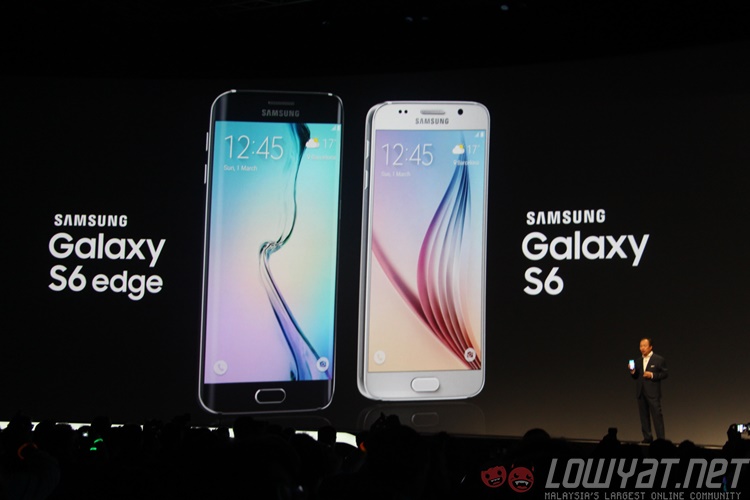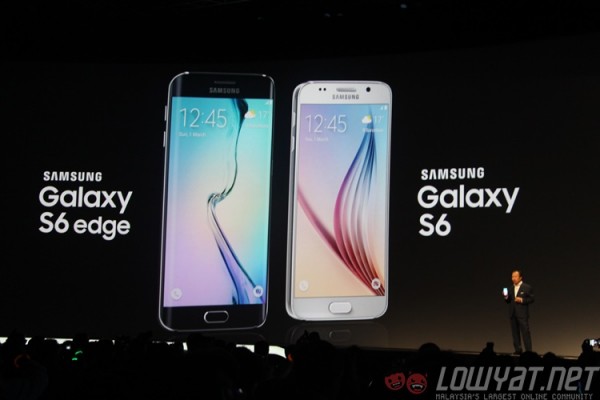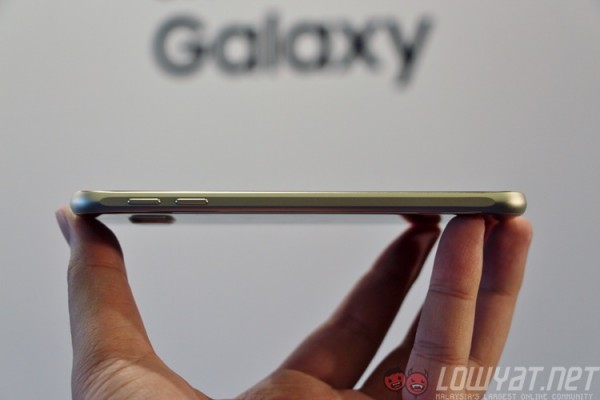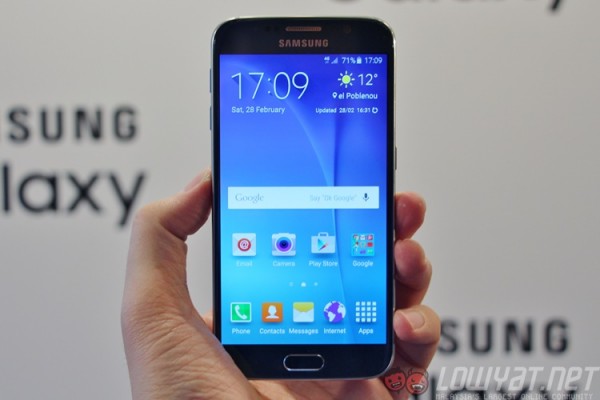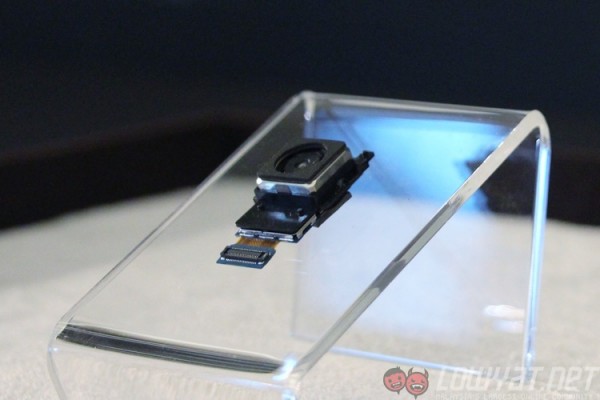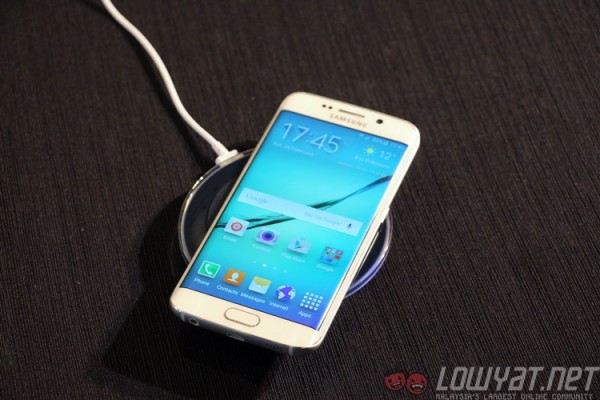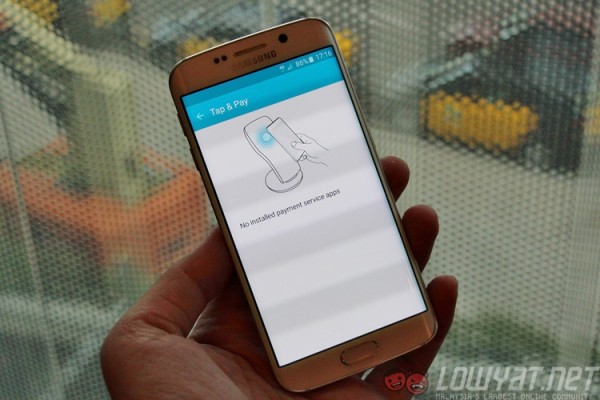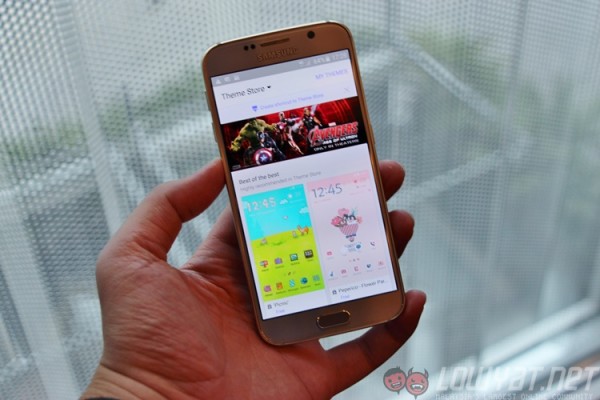Samsung has just officially released its much-awaited Galaxy S6 flagship smartphone at its Galaxy Unpacked event. While many has predicted the fall of what is still the world’s no.1 smartphone maker by volume, the Galaxy S6 shows that Samsung is not yet ready to throw in the towel.
The Galaxy S6 may have a similar design language that is unmistakably Samsung, but the company has finally clothed its crown jewel device with materials that justify its status. Samsung has banished from memory its previous flimsy plastic cases in favour of a Gorilla Glass 4 back and an “aerospace-grade” metal frame.
All new flagship devices scream at least one technological breakthrough; the 6.8mm thin Galaxy S6 boasts four. The first is an especially proud one for Samsung: the Galaxy S6 is powered by the world’s first 14nm mobile chipset, the Exynos 7420 octa-core processor. Made up of four Cortex-A57 cores running at 2.1GHz and four 1.5GHz Cortex-A53 cores as well as a Mali-T760 GPU, Samsung’s Exynos division has come a long way since its earlier attempts, and from what we experienced with the Galaxy Note 4’s Exynos 5433 we can only expect even better performance and battery life on the Exynos 7420.
The second and third of the Galaxy S6’s technological breakthroughs are just as impressive – though it may not be as apparent for consumers. The Galaxy S6 packs 3GB of the world’s first LPDR4 RAM, which, like the Exynos chip, is made by Samsung’s Electronics arm. In addition, its recently announced Universal Flash Storage 2.0 (UFS 2.0) – claimed to be 2.7 times faster than normal eMMC 5.0 standards but up to 50% more power efficient – also makes it into Samsung’s latest smartphone.
The Galaxy S6, which weighs 138g, will be available in three storage options: 32GB, 64GB and 128GB – but there won’t be a microSD card slot. To ease consumers into accepting this fact, Samsung has partnered with Microsoft to offer free 100GB OneDrive storage for two years.
The final technological breakthrough is perhaps not so exciting in practical terms. The Galaxy S6 is the now the record holder for being the smartphone with the world’s sharpest display; at 5.1 inches across with a QHD resolution (2560 x 1440), the Galaxy S6 has a pixel density of 577ppi. The display is, once again, running on Samsung’s exceptional Super AMOLED display.
Moving on to the Galaxy S6’s imaging prowess. The GS6’s rear camera is a brand new 16MP sensor with a large F1.9 aperture and Smart OIS, while the front camera is also a new 5MP sensor with an F1.9 aperture. Both these sensors are equipped with HDR Auto, which automatically shoots in HDR by default unless you turn the function off. On the other hand, the front camera is also equipped with a 90-degree wide-angle lens.
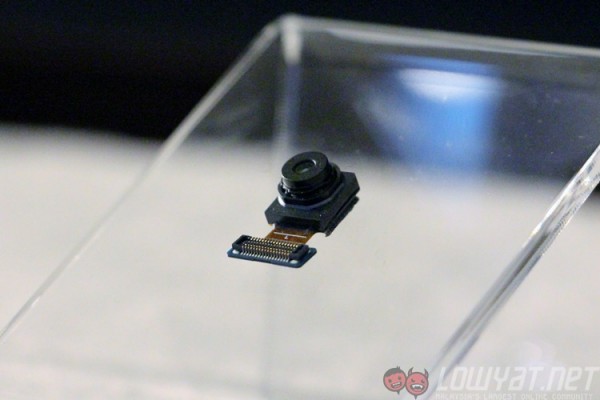 The Samsung Galaxy S6’s rear (top) and front (bottom) camera sensors
The Samsung Galaxy S6’s rear (top) and front (bottom) camera sensors
Samsung’s also reworked the audio solution on the GS6. After finally realizing rear-mounted speakers are simply not ideal, the Galaxy S6’s speakers have been relocated to the bottom of the device, and the new amp is also said to be 1.5 times louder than the Galaxy S5’s.
Then, there’s the battery. The Galaxy S6 has a slightly smaller 2,550mAh battery compared to the Galaxy S5, but the addition of Fast Charge (0 to 50% in 30mins, 0 to 100% in 80 minutes) should be more than sufficient. On top of that, the Galaxy S6 is also one of the first smartphones to offer embedded wireless charging support for both WPC (which developed the Qi standard) and PMA standards, allowing you to charge the GS6 with virtually any wireless charging pod.
Finally, this LTE Cat 6-enabled smartphone has also had its fingerprint scanner tweaked. The home button which houses the sensor is now slightly larger to accommodate a new touch-based scan similar to Apple’s TouchID, instead of the swipe-based method which proved to be unintuitive and uncomfortable for users.
As for the software, Samsung has again worked hard to remove unnecessary bloatware on its TouchWiz UX, giving it a much leaner feel. That being said, there are a few notable additions. First, there’s the introduction of Samsung Pay, the company’s answer to Apple Pay. And, there’s the new Themes Store, which is likely inspired by the widespread popularity of Chinese smartphones which offer this almost as a standard feature.
Also, the Galaxy S6 will ship with KNOX 2.4, Samsung’s latest enterprise-level security suite. Another interesting addition is the smart upgrade for Find My Mobile, which lets you remotely enable Ultra Power Saving Mode when your phone is missing, giving you more precious time to locate the device.
The Galaxy S6 will be available in four colours: white, black, gold and blue. At the time of launch, no pricing details were provided.
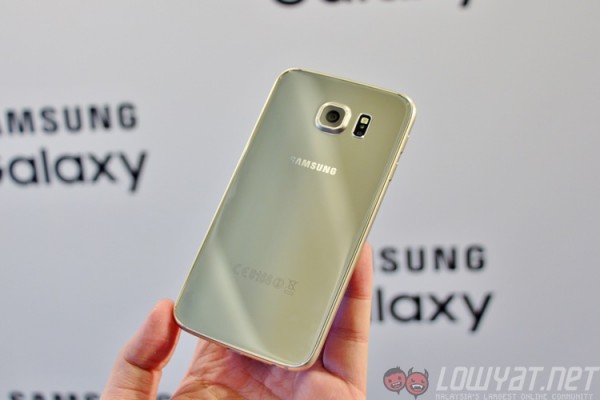
But more importantly, this is the culmination of Project Zero – a codename that was chosen to mark Samsung starting from square one. The S6 was designed and built from the ground up, based on what it knows best and what has failed in the past. It has now answered almost all criticism leveled at the Galaxy S series, and Samsung’s statement is crystal clear: it intends to hold on to that number 1 tag.
READ MORE:
SAMSUNG ANNOUNCES GALAXY S6 EDGE, WITH DUAL CURVED DISPLAY
SAMSUNG ANNOUNCES SAMSUNG PAY, KOREAN GIANTS’ RESPONSE TO APPLE PAY
HANDS ON: SAMSUNG GALAXY S6 & GALAXY S6 EDGE
Follow us on Instagram, Facebook, Twitter or Telegram for more updates and breaking news.


